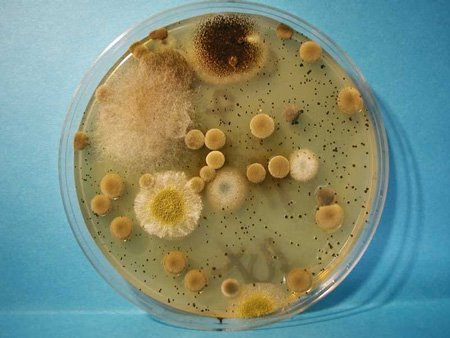
So while BLDGBLOG continues its fascination with Martian viro-invaders, Social Fiction has been expanding its microbial menagerie: godless ecologies simmering with selfish codes and data silently contesting for survival — fractal, pointillist, and mercilessly lethal.

“Trees and ferns often grow in fractal forms,” this website tells us. ”Bacteria colonies can, too.”
For instance, these colonies of Bacillus subtilis:

Which is why someone should market them alongside these Gardens-in-a-Bag and the equally portable Flowers-in-a-Can. Certainly our reliably adventurous and near-future spacefaring Dubai sheiks can be convinced to invest in these instant landscapes, perhaps even finance viral hunting expeditions to new Edens, where not only new bird and frog species lay uncatalogued but prized super-strains of Avian flu and Ebola-HIV hybrids also await collection and classification by CDC-licensed landscape architects.
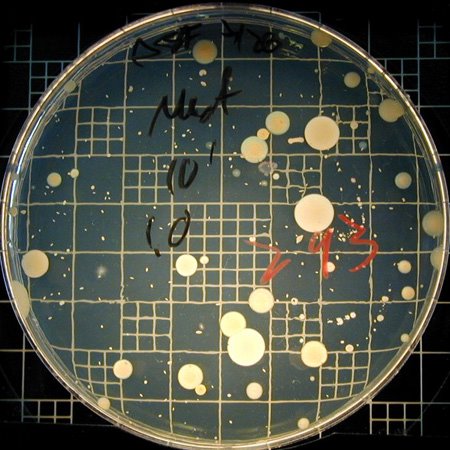
And if they happen to run out of test tubes, an unfortunate landscape architect can just as easily be converted into a greenhouse, his body then FedExed off to the manufacturing plant, whence every crevices are swabbed, tissues dissected, and bubbling fluids bottled. Afterwards, the samples are cultured and espaliered with nutrient agar and antibiotics before finally beging shipped off along major air traffic routes to waiting WHO-certified gardeners.
(Or maybe the expedition encounters a malicious band of orchid hunters and transnational ex-CIA miner-loggers. Everyone's sweaty, no shower in weeks, and the constant high pitched droning of the forest has made all trigger-happy and quite insane. The Hot Zone meets Adaptation meets Aguirre.)
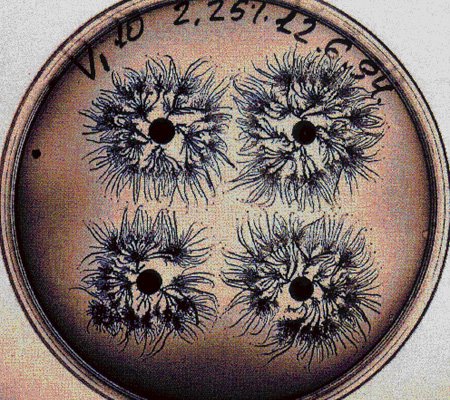
Meanwhile, these are some examples of rotex fractal growth found in colonies of Bacillus subtilis (B 168): “The colonies grow by the movement of bacteria droplets, filled with bacteria spinning around a common center. Smaller droplets explore the space left by the larger, leading droplets.”
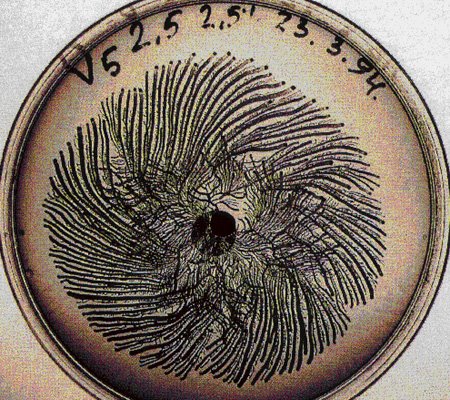
“Under adverse conditions, B 168 usually grow in compact clusters, because the bacteria are immobile. However, if the colonies are grown for very long periods, they sometimes exhibit a new mode of branching growth.”
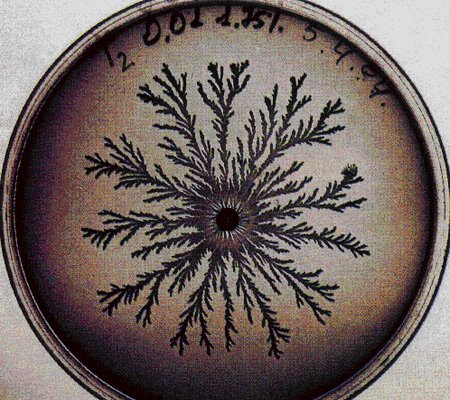
These varying branching patterns occur by modulating environmental parameters.
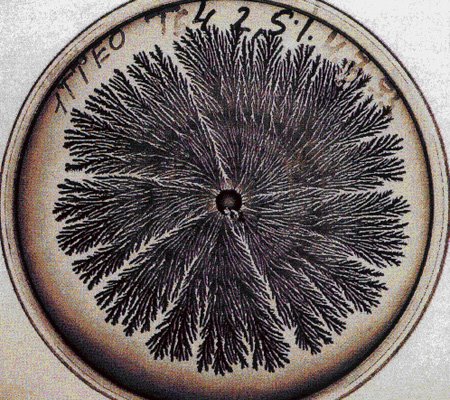
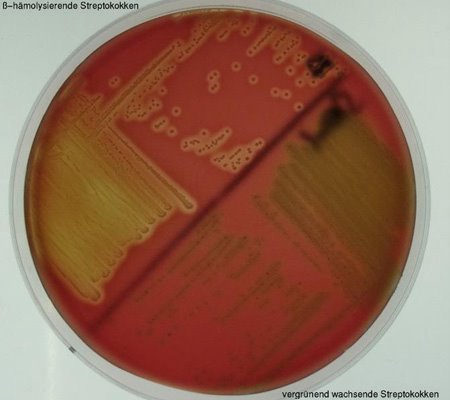
So simply arrange them atop your coffee table. Nothing will bring your guests to chat ironically about post-9/11 bioterrorism faster.
More Gardens-in-a-Petri
Yet More Gardens-in-a-Petri
Thank you.
Kind regards,
Cris.
Comments on posts older than a week are moderated —